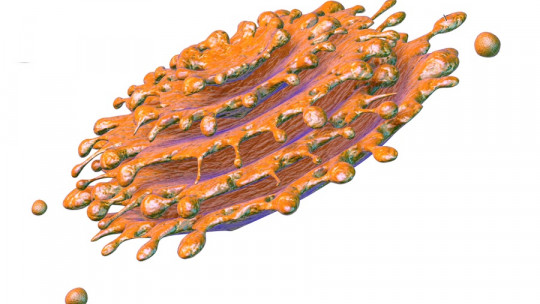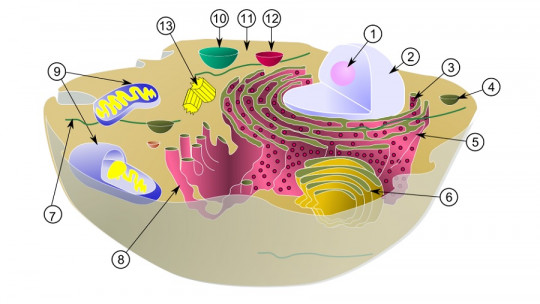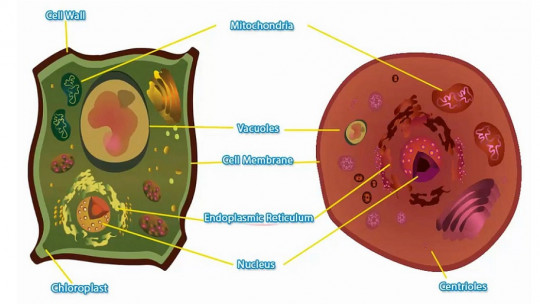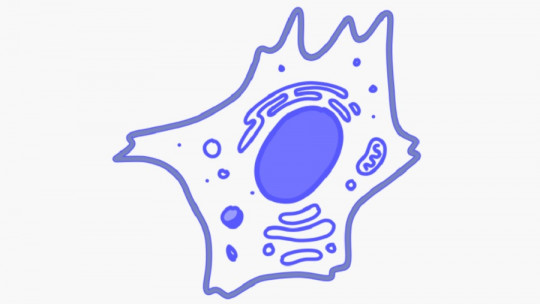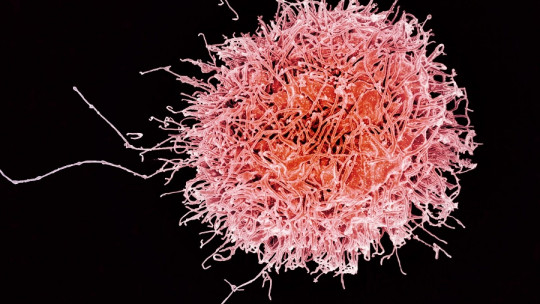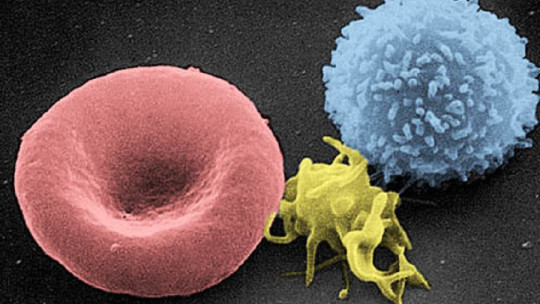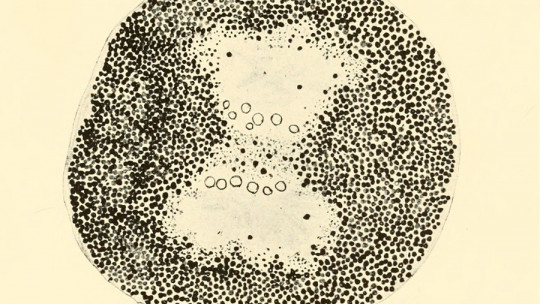
All of us who have studied biology in high school have been given the parts of the cell. What if cell nucleus, what if plasma membrane, what if Golgi and endoplasmic reticulum… but there is a part that, almost always, goes unnoticed.
Whether because of their size or because, in appearance, they are very simple, lysosomes have not had much prominence in biology classes, despite the fact that, if they do not carry out their functions correctly, the associated medical problems are fatal.
Let’s give them a little prominence and see what they are, what functions they perform and what diseases they can cause if they do not work correctly.
What are lysosomes?
The lysosomes They are membranous structures found inside cells Within these are enzymes, which are used to carry out various metabolic processes in the cell cytoplasm and in some organelles, degrading substances. So to speak, these bubbles with enzymes inside are like the stomachs of the cell.
In an inactive state, their appearance is granular, while when they are activated, they have a vesicular shape, varying in size. This size can be between 0.1 and 1.2 μm and they are spherical in shape. These structures can be found in all animal cells, being a characteristic part of this type of cell and being formed by the Golgi apparatus, whose main function is the transport and use of enzymes. Although the Golgi apparatus is also found in the plant cell, there are no lysosomes in it.
What substances can be found in lysosomes?
Within the lysosomes we can find different types of enzymes, which will be specialized in digesting different types of substances For the enzymes to be activated, it is necessary that the lysosomes have a medium inside them with an acidic pH, between 4.6 and 5.0. Among the main ones we have three:
Each lysosome can contain about 40 hydrolytic enzymes that is, enzymes that catalyze a chemical reaction between a molecule of water (H2O) and another or several molecules of other substances.
Classification of substances according to their role in digestion
Likewise, the aforementioned enzymes can be classified based on their role during the entire process of digestion of substances. Thus, we talk about primary enzymes and secondary enzymes:
1. Primary enzymes
They are composed only of hydrolase enzymes and do not contain other vesicles They are enzymes that have not yet participated in the digestion of substances.
2. Secondary enzymes
They are the combination of primary enzymes with other vesicles These enzymes would be responsible for digesting the cell, cleaning the structures that are damaged, this process being known as internal digestion of the cell.
Classification of substances according to the material they digest
In addition to this classification, we have one that refers to what type of material they are responsible for digesting, having heterophagic and autophagic vacuoles:
1. Heterophagic vacuoles
They are the enzymes that They are responsible for attacking and digesting material external to the cell Among particles external to the cell we have bacteria and remains of neighboring cells.
2. Autophagic vacuoles
The substances that will be digested with these lysosomes come from the internal environment of the cell.
Structure of this part of the cell
The structure of lysosomes is not very complex. They appear in the form of spherical corpuscles, with variable dimensions that can be between 100 and 150 nanometers (nm) in diameter. Although small, these corpuscles They can represent 5% of the total volume of the cell a percentage which is modifiable depending on the digestion rate that the cell is carrying out, that is, the amount of substances that it is “disassembling.”
The most notable part, after the enzymes that we have already seen previously, is the lysosomal membrane It is a simple membrane, which has the purpose of preventing the enzymes found within the lysosome from dispersing throughout the cytoplasm. Since enzymes are substances that induce processes in which molecules are “destroyed,” it is advisable to keep them safe, since, otherwise, the cell is destroyed, inducing its autolysis.
If the enzymes have been synthesized improperly, it can have serious consequences for the cell and, consequently, for the entire organism. This is because, in this case, the residual products that arise from the metabolic reactions that occur within the lysosomes would be stored in the cell, potentially damaging it.
An example of a disease due to lysosome problems is glycogenosis type II, where the enzyme β-glucosidase is absent, which causes large amounts of glycogen to accumulate in the organs, which is fatal for the body.
Features
Although small, Lysosomes perform very important functions for the body
1. Degradation of substances
The main function of lysosomes is to digest substances, both external and internal to the cell. Internal substances may be components that the cell no longer needs, but they can be degraded even further. Lysosomes are responsible for reducing the complexity of these substances so that their elimination is easier.
They also carry out internal digestion, which occurs in case the cell is damaged. In this way, the damaged structures or, if necessary, the entire cell are digested so that it can be replaced by a new and more functional one.
2. Defense mechanism
Lysosomes, in addition to digesting substances, are a very important defense mechanism for the cell, since They are capable of defending it from the attack of invading bacteria
They are responsible for defending the body from attack by bacteria, trapping them in vesicles and digesting them, thus activating the immune response.
3. Metabolic sensor
Lysosomes, in addition to degrading substances, participate in the perception of the metabolic state of the cell. In fact, Depending on the location of the lysosome populations, they have a more degrading function or a more sensory function
It has been seen that the perinuclear lysosome population, that is, close to the cell nucleus, is more involved in degradation, while another, more peripheral, would be responsible for knowing the state of resource availability.
4. Exocytosis
In recent years it has been seen that lysosomes have the ability to participate in exocytosis, that is, the elimination of substances from the internal environment of the cell.
We have a particular case in liver cells. The lysosomes of the liver cells are what would ensure that these cells secrete lysosomal enzymes into the bile.
Substance degradation pathways
There are three routes by which the substances that are going to be digested arrive in the lysosomes:
In the first, lysosomes could be considered as the final station of the endocytic pathway, this is the route by which compounds of various types are introduced into the cell. Most of the molecules that are degraded by this pathway must first pass through autophagic vacuoles.
The second refers to unhelpful particles that have been phagocytosed, such as bacteria or residual particles from other cells These particles must be contained inside the lysosomes to be digested, and thus ensure that they end up being eliminated without damaging the cell as they pass through. The compartment in which they become trapped will mature and become what is called a phagosome, which will fuse with the lysosome once the former matures.
The third degradation pathway is autophagy. It is a process that occurs in all organelles when they are damaged. Lysosomes participate in different types of autophagy, adapting to the damaged organelle in question and the needs of the cell, or how salvageable it is.
Lysosomal diseases
Lysosomal diseases are those that are caused by the uncontrolled release of enzymes outside the cell or also due to a malfunction of lysosomes, which induce the accumulation of harmful substances.
Sphingolipidosis
It is a medical condition that induces a set of diseases. It is caused by a malfunction in one of the enzymes responsible for degrading sphingolipids very common substances in the brain.
Due to this, the condition induces brain damage, causing intellectual disability and premature death. Among the diseases due to sphingolipidosis we can find Krabbe disease, Tay-Sachs disease, Gaucher disease and Niemann-Pick disease.
Wolman’s disease
This is a congenital lipidosis. It is hereditary, transmitted by autosomal recessive inheritance, and is caused by deficiency of a lysosomal enzyme, acid lipase, its production encoded in the long arm of chromosome 10
The function of gastric lipase is the degradation of short and long chain triglycerides, as well as cholesterol esters to their basic units. When you do not have this enzyme, these triglycerides and esters are accumulated in various organs.
The first symptoms appear during the first weeks of life, being vomiting, diarrhea, enlarged liver and spleen, abdominal distension, progressive malnutrition and arrest of the weight curve. It evolves very quickly to worse symptoms and ends with the death of the baby after a year.
Glycogenosis type II or Pompe disease
It is a defect of acid maltase, a defect which causes glycogen to appear stored in lysosomes without being properly degraded
It is a very rare and debilitating muscle disease, affecting both children and adults. In childhood it already manifests itself during the first months, but in more adult stages it can appear suddenly, having a slower progression.
In both age groups there is muscle weakness and the appearance of respiratory problems In children, the heart appears enlarged, in addition to not being able to support the head.
This disease is considered panethnic, that is, it appears in all races, but the percentages vary from race to race. The incidence in the African American child population is very high, 1 in 14,000, while in Caucasian adults this is 1 in 60,000 and in children it is 1 in 100,000.

